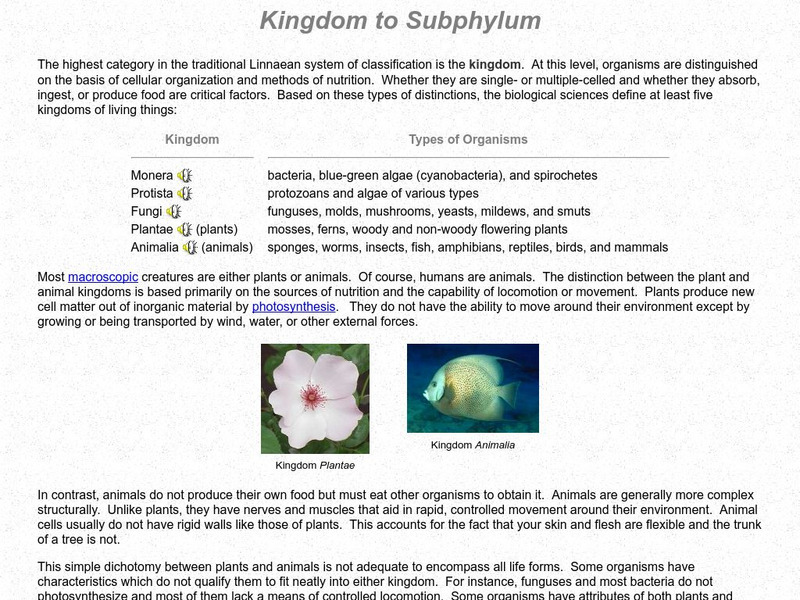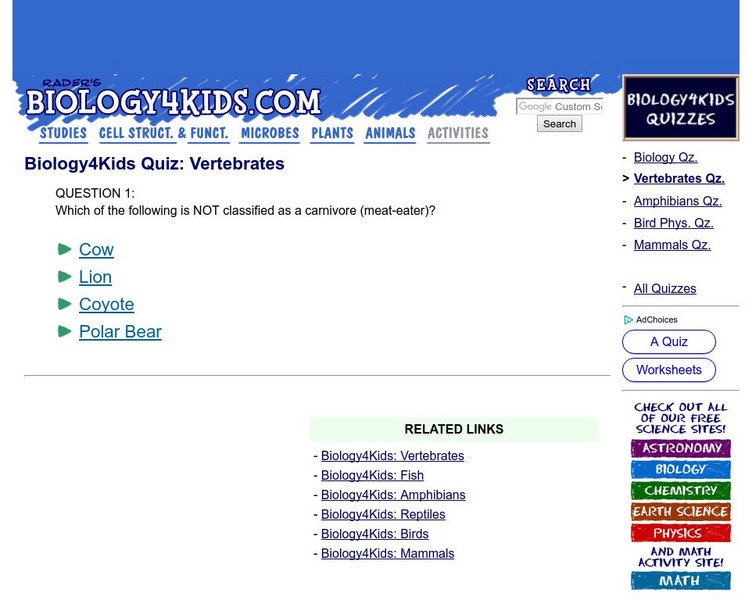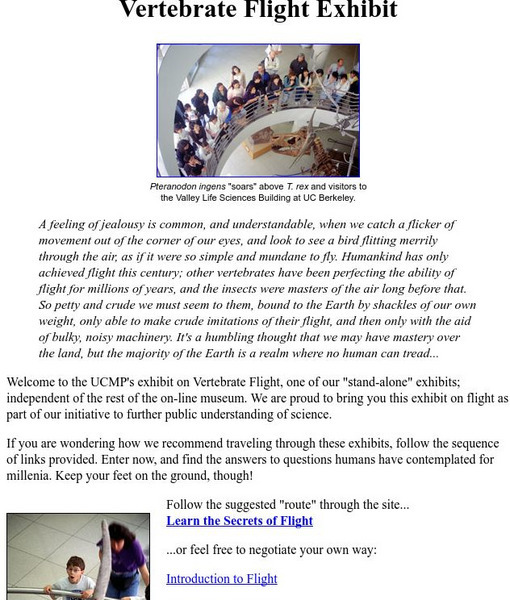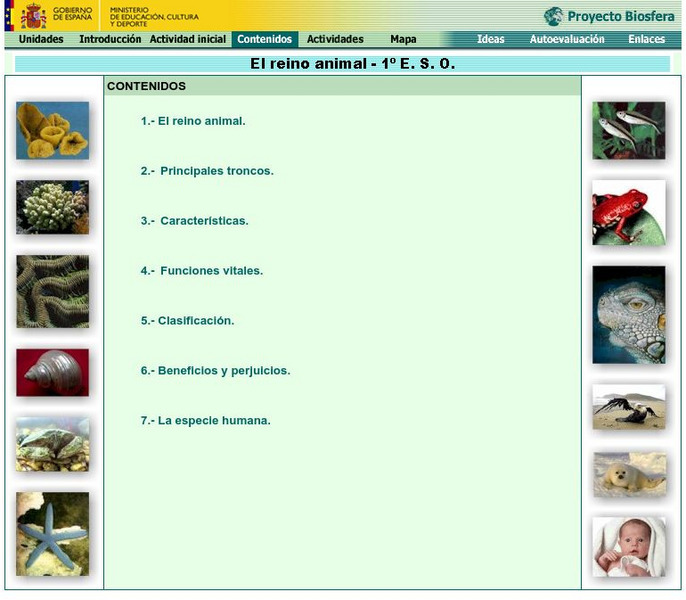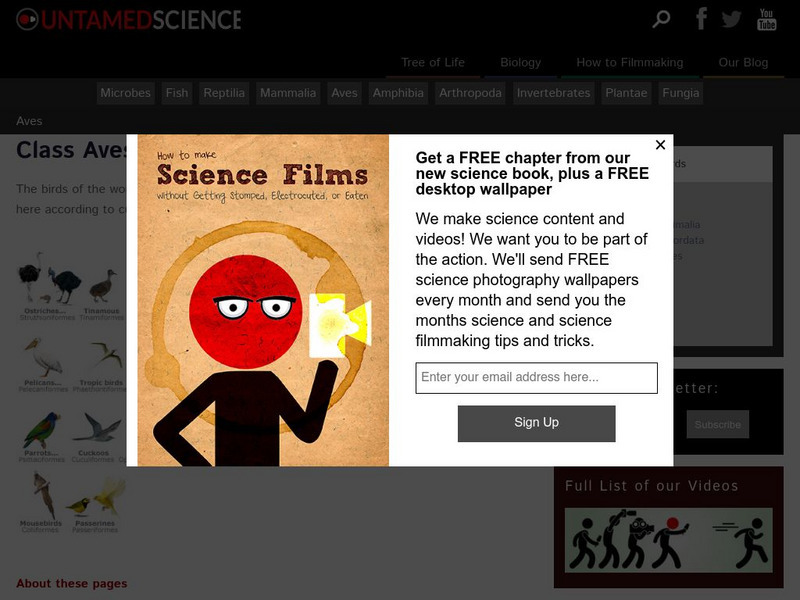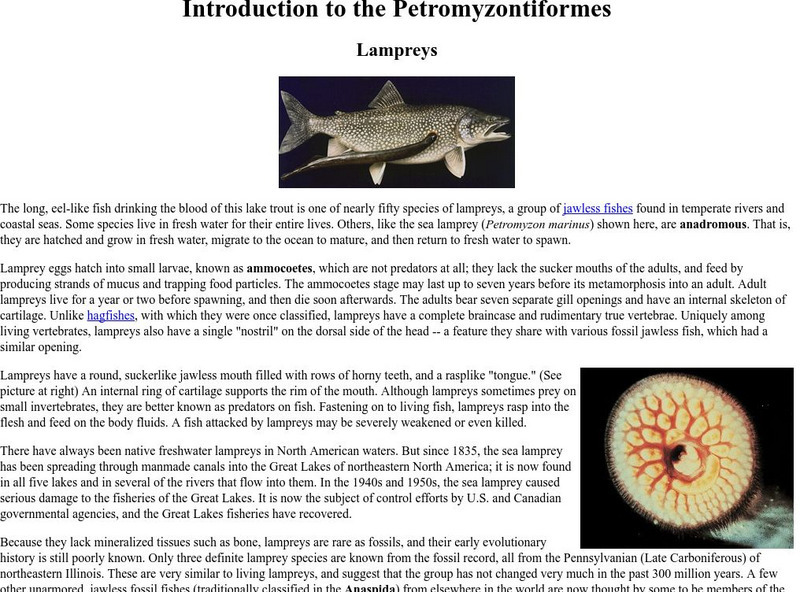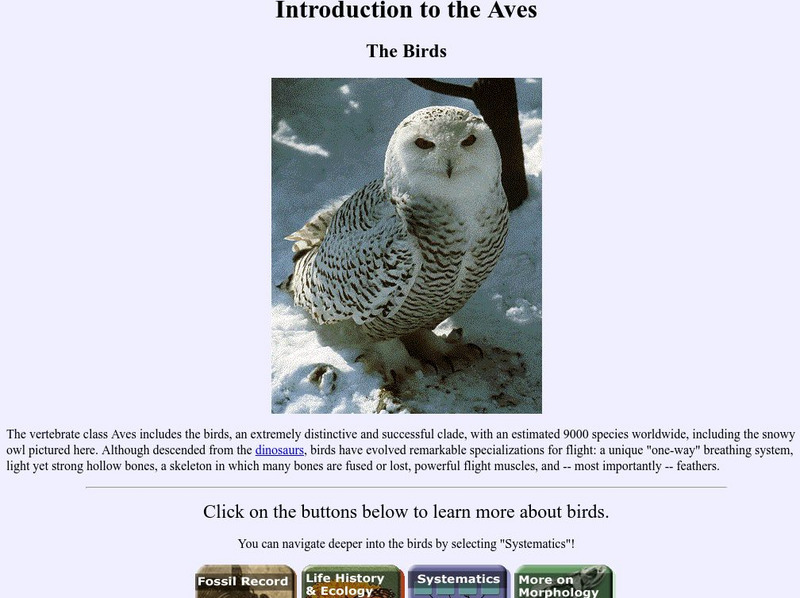Palomar Community College District
Palomar College: Kingdom to Subphylum
The highest category of taxonomic classification is the kingdom. This website from Palomar College presents the five kingdoms in an easy-to-read chart and discusses the Animalia and Plantae kingdoms in depth. After reading through the...
Channel 4 Learning
4 L: Science Essentials: Choose Life
A great review for understanding life cycles and many aspects of living things. Find topics and their main ideas, vocabulary review, quizzes, and complementary activities for teachers to use.
Georgia Department of Education
Ga Virtual Learning: Earth and Life History
In this amazingly comprehensive tutorial you will learn about the geological and environmental changes that occurred during the geologic time scale.
Utah Education Network
Uen: Science Vocabulary Game
Fourth graders will play a review memory game with Utah's Grade 4 Science Standard V vocabulary words during this lesson. Words associated with living things and classifications of living things are included in this lesson.
Globio
Glossopedia: Animals
The animal kingdom and its classification are explained and broken down into vertebrates and invertebrates in this resource. "Best-of" the animal kingdom list given - fastest, smallest, largest, strongest and more.
Virginia Tech
Virginia Polytechnic Institute: Greenhouse Dinosaur Extinction Theory
This comprehensive page discusses the Asteroid Impact vs. Volcano-Greenhouse dinosaur extinction debate. It was written by paleontologist, professor, and scientist Dr. Dewey McLean.
Biology Pages
Kimball's Biology Pages: Vertebrate Lungs
This personal page defines and compares the gas exchanges by the lungs of amphibians, reptiles, birds, and mammals. Offers detailed images.
Biology 4 kids
Biology4 Kids: Quiz: Vertebrates
Take this ten-question review quiz over the Phylum Chordata. Read more about each question after an incorrect answer is given.
Sam Houston State University
Sam Houston State University: Chordate Characteristics
This site describes the characteristics of Chordates. There are also examples of two groups that show an affinity toward the phylum Chordata but do not actually exhibit the characteristics. This site also describes the history of the...
University of California
Ucmp: Myxini Hagfishes
This site contains quite a bit of information about hagfishes. There are pictures as well.
University of California
Ucmp: Entrance to the Vertebrate Flight Exhibit
This University of California Berkeley page provides information on the evolution of vertebrate flight and includes links to the following topics: Introduction to Flight, The Physics of Flight, Gliders and Parachuters, The Evolution of...
National Institute of Educational Technologies and Teacher Training (Spain)
Ministerio De Educacion: El Reino Animal
Learn about the animal kingdom including an in-depth look at body characteristics, reproduction, types of cells, ways they obtain food, and evolutionary relationships. Many illustrations and nine interactive activities are included.
BBC
Bbc: World's Smallest Fish
This article reports on the identification of a fish that has set a new record as the world's smallest known vertebrate.
University of Florida
U. Florida Museum: Fossil Horse Cyber Museum
An interesting site about prehistoric horses. Has a large gallery of fossilized horse pictures as well as an area explaining how a horse becomes fossilized.
Tree of Life Project
Reptiles: Synapsida
This site contains general information about the extinct link between reptiles and mammals. The Synapsida organisms are the link.
Untamed Science
Untamed Science: Biodiversity: Animals: Chordates: Amphibians: Class Amphibia
Explore the biodiversity of the Class Amphibia through videos, photos and examples. [2:34]
Untamed Science
Untamed Science: Biodiversity: Animals: Chordates: Birds: Class Birds
Through video clips and pictures, explore the orders and a variety of species found in the Class Aves.
Other
Cincinnati Museum Center
This site describes the Museum of Natural History and Science in detail and provides links to other programs and exhibits offered.
CK-12 Foundation
Ck 12: Biology: Vertebrate Reproduction
[Free Registration/Login may be required to access all resource tools.] Discusses three types of reproductive strategies for vertebrates.
Australian Museum
The Australian Museum
This site features links to information on Australia's museum.
Alabama Learning Exchange
Alex: Classification
This instructional activity will explain the reasons that society groups and classifies. The instructional activity has a hands-on component that helps students connect everyday grouping with the way that scientists group and classify...
University of California
Ucmp: Lampreys
This site from the University of California contains detailed information about lampreys. There are several pictures, including special links.
University of California
Ucmp: Birds Decendents of Dinosaurs
This site from the University of California, Berkeley contains general information and links to information about the fossil record of birds, the life history of birds, the systematics of birds, and the morphology of birds.
University of California
Ucmp: More on Morphology
A concise site that describes the four basic features that all chordates share.


